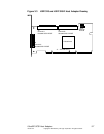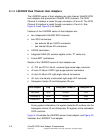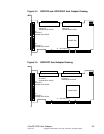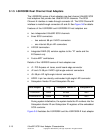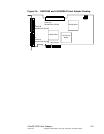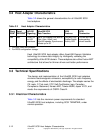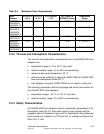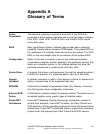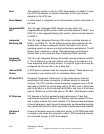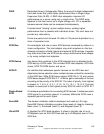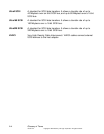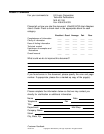
Glossary of Terms A-3
Version 2.2 Copyright © 2002–2004 by LSI Logic Corporation. All rights reserved.
RAID Redundant Array of Independent Disks. An array of multiple independent
hard disk drives that yields better performance than a Single Large
Expensive Disk (SLED). A RAID disk subsystem improves I/O
performance on a server using only a single drive. The RAID array
appears to the host server as a single storage unit. I/O is expedited
because several disks can be accessed simultaneously.
RAID 0 Provides block “striping” across multiple drives, yielding higher
performance than is possible with individual drives. This level does not
provide any redundancy.
RAID 1 Drives are paired and mirrored. All data is 100 percent duplicated on a
drive of equivalent size.
SCSI Bus A host adapter and one or more SCSI devices connected by cables in a
linear configuration. The host adapter may exist anywhere on the bus,
allowing connection of both internal and external SCSI devices. A system
may have more than one SCSI bus by using a multichannel host adapter
or by using multiple host adapters.
SCSI Device Any device that conforms to the SCSI standard and is attached to the
SCSI bus by a SCSI cable. This includes SCSI host adapters, SCSI disk
drives, SCSI CD-ROM drives, and so on.
SCSI ID An identifier that addresses specific devices on the SCSI bus and
determines device selection when multiple devices contend for ownership
of the SCSI bus. Wide SCSI buses support SCSI IDs 0–15, and narrow
SCSI buses support SCSI IDs 0–7. A device gains ownership of the bus
according to the priority of its SCSI ID. The order of priority, from highest
to lowest, is: 7, 6, 5, 4, 3, 2, 1, 0, 15, 14, 13, 12, 11, 10, 9, 8. The host
adapter is usually set to the highest priority SCSI ID, which is SCSI ID 7.
Single-Ended
SCSI
A hardware specification for connecting SCSI devices. It references each
SCSI signal to a common ground. In contrast, differential SCSI uses a
separate ground for each signal.
SureLINK The domain validation method developed and used by LSI Logic.
SureLINK Domain Validation provides three levels of integrity checking:
Basic (level 1), Enhanced (level 2), and Margined (level 3).
Ultra SCSI A standard for SCSI data transfers. It allows a transfer rate of up to
20 Mbytes/s over an 8-bit SCSI bus and up to 40 Mbytes/s over a 16-bit
SCSI bus.



